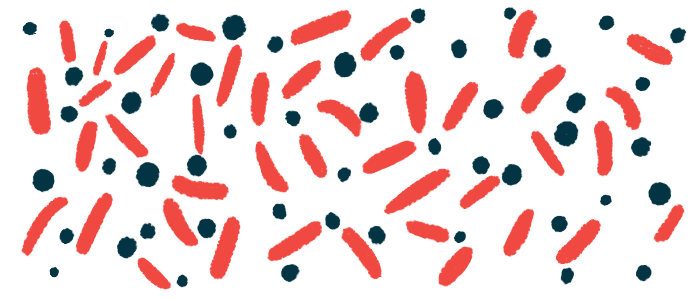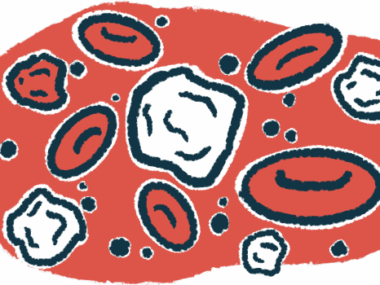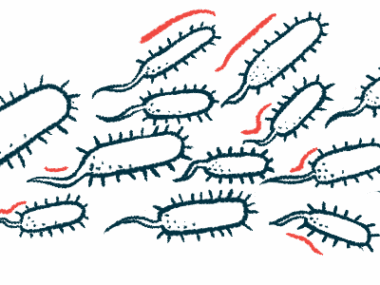Signaling molecule PI5P shows promise for treating CF infections
Antimicrobial activity against M. abscessus seen in immune cells from patients
Written by |

Scientists have discovered a potential therapy for cystic fibrosis (CF) patients who are infected with Mycobacterium abscessus, a bacterium that can cause serious lung infections.
They found that a signaling molecule called PI5P can boost the antimicrobial activity of immune cells isolated from patients against the bacterium. This happens even for cells from patients not eligible for treatment with Kaftrio, a CFTR modulator therapy that’s marketed in the US. as Trikafta.
“The findings suggest [PI5P] as a promising alternative or adjunct therapy, especially for those who cannot access [Kaftrio] treatment, warranting further clinical investigation,” researchers wrote.
The study, “Phosphatidylinositol 5-Phosphate-Loaded Apoptotic Body-Like Liposomes for Mycobacterium abscessus Infection Management in Patients With Cystic Fibrosis,” was published in The Journal of Infectious Diseases.
Due to the abnormally thick mucus that builds up in the lungs of CF patients, bacteria and other microorganisms can become trapped in the airways, which increases the risk of lung infections.
M. abscessus is naturally resistant to many antibiotics
Mycobacterium abscessus, or M. abscessus, is a rapidly growing bacterium that’s naturally resistant to many antibiotics. As such, it can cause serious lung infections in CF patients that require long-term administration of multiple antibiotics, with sustained infections driving disease progression and poor outcomes.
Studies suggest people with CF have a defective antimicrobial response, in part due to dysfunctional phagocytosis, a process whereby immune cells like macrophages engulf and kill bacteria. Once inside macrophages, this process is regulated by fat-like lipid molecules, such as PI5P, which stands for phosphatidylinositol 5-phosphate.
A research team in Italy previously showed PI5P, packaged in tiny membrane-wrapped sacs, called apoptotic body-like liposomes (ABLs), boosted the killing capacity of immune cells isolated from the lungs of CF patients with drug-resistant lung infections. Moreover, in healthy and CF mice infected with M. abscessus, ABL/PI5P reduced lung inflammation and microbial burden, which was enhanced by adding the antibiotic amikacin.
Building on these findings, the team tested ABL/PI5P, combined with amikacin or Kaftrio, in M. abscessus-infected macrophages from CF patients, who were treated with Kaftrio or weren’t on it.
The researchers focused on Kaftrio because “not all [CF patients] can receive [Kaftrio] therapeutic regimen, as it excludes several CFTR mutations, underscoring the urgent need for the development of novel therapeutic strategies.”
Treatment enhanced clearance of M. abscessus from inside macrophages
Macrophages isolated from Kaftrio-treated CF patients were infected with M. abscessus and then treated with ABL/PI5P and/or Kaftrio. Data showed both treatments, alone or in combination, significantly enhanced the clearance of M. abscessus from inside macrophages. Similar results were obtained when the team used macrophages from CF patients who were not treated with Kaftrio.
Some patients who did not receive Kaftrio were ineligible because they did not have CFTR mutations amenable to modulator therapy.
Conversely, patients were considered eligible for Kaftrio if they carried the F508del mutation and did not receive the therapy due to age, treatment refusal, or waiting for a drug prescription. Patients were also considered eligible if they had a mutation amenable for Trikafta treatment in the U.S. but not in the European Union, or if they carried a mutation being studied in a clinical trial in Europe.
In macrophages isolated from eligible patients, Kaftrio alone significantly reduced M. abscessus. In comparison, there was no effect when Kaftrio was used to treat macrophages from ineligible patients, “suggesting that [Kaftrio] could be ineffective in terms of recovery of antimicrobial response in these patients,” the team wrote.
Notably, ABL/PI5P treatment alone reduced M. abscessus in macrophages of CF patients without a Kaftrio regimen, regardless of their eligibility status.
Finally, the researchers tested the combination of ABL/PI5P and amikacin on CF macrophages from patients not receiving Kaftrio. Those macrophages were infected with a CF patient-derived strain of M. abscessus called Mab285. ABL/PI5P treatment significantly cleared Mab285 inside macrophages, an effect that was significantly boosted with the addition of amikacin.
“These results support the possible development of ABL/PI5P treatment as an alternative or adjunct therapy for [CF patients], especially for those … who cannot benefit from [Kaftrio] treatment,” the researchers wrote.







